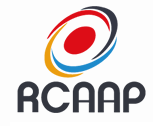Desempenho de cordeiros desmamados aos 67 dias alimentados com silagem de milho e feno de aveia
DOI:
https://doi.org/10.5433/1679-0359.2003v24n1p85Palavras-chave:
Confinamento, Ganho de peso, Grupo genético, Ovinos, Volumoso.Resumo
Este trabalho teve como objetivo avaliar o desempenho de cordeiros desmamados aos 67 dias e alimentados com diferentes fontes de volumosos em confinamento. Foram utilizados 30 animais oriundos de cruzamentos entre ovelhas Corriedale e carneiros Hampshire Down, Ile de France e Suffolk. Logo após o desmame os animais foram confinados, sendo distribuídos para receberem um dos tratamentos: T1 – Silagem de milho mais concentrado; T2 – Silagem de milho e feno de aveia (50% do volumoso cada) mais concentrado; e T3 – Feno de aveia mais concentrado. A proporção volumoso:concentrado utilizada foi de 60:40, base seca. Os pesos médios dos animais no início do experimento foram de 11,51; 12,46 e 12,33 kg (P>0,05) e os pesos finais, após nove semanas de confinamento, de 17,53; 19,34 e 19,35 kg (P>0,05), respectivamente, para T1, T2 e T3. Os animais apresentaram ganho de peso similar (P>0,05) entre os tratamentos. Não foram observadas diferenças para os pesos e ganhos de peso entre grupos raciais, porém, os machos apresentaram maiores ganhos de peso do que as fêmeas (0,120 x 0,091 kg/dia). Não houve diferença para a conversão alimentar entre os tratamentos, porém animais do T2 consumiram maior quantidade de matéria seca. Os resultados obtidos neste estudo sugerem que pode ser utilizado tanto a silagem de milho como o feno de aveia na alimentação de cordeiros desmamados, sem prejuízos na produção.
Downloads
Downloads
Publicado
Como Citar
Edição
Seção
Licença
Semina: Ciências Agrárias adota para suas publicações a licença CC-BY-NC, sendo os direitos autorais do autor, em casos de republicação recomendamos aos autores a indicação de primeira publicação nesta revista.
Esta licença permite copiar e redistribuir o material em qualquer meio ou formato, remixar, transformar e desenvolver o material, desde que não seja para fins comerciais. E deve-se atribuir o devido crédito ao criador.
As opiniões emitidas pelos autores dos artigos são de sua exclusiva responsabilidade.
A revista se reserva o direito de efetuar, nos originais, alterações de ordem normativa, ortográfica e gramatical, com vistas a manter o padrão culto da língua e a credibilidade do veículo. Respeitará, no entanto, o estilo de escrever dos autores. Alterações, correções ou sugestões de ordem conceitual serão encaminhadas aos autores, quando necessário.













